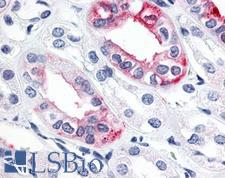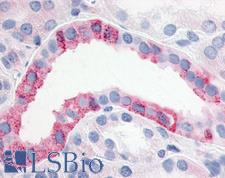Login
Registration enables users to use special features of this website, such as past
order histories, retained contact details for faster checkout, review submissions, and special promotions.
order histories, retained contact details for faster checkout, review submissions, and special promotions.
Forgot password?
Registration enables users to use special features of this website, such as past
order histories, retained contact details for faster checkout, review submissions, and special promotions.
order histories, retained contact details for faster checkout, review submissions, and special promotions.
Quick Order
Products
Antibodies
ELISA and Assay Kits
Research Areas
Infectious Disease
Resources
Purchasing
Reference Material
Contact Us
Locations
Orders Processing,
Shipping & Receiving,
Warehouse
2 Shaker Rd Suites
B001/B101
Shirley, MA 01464
Production Lab
Floor 6, Suite 620
20700 44th Avenue W
Lynnwood, WA 98036
Telephone Numbers
Tel: +1 (800) 227-6666
Contact Us
Additional Contact Details
Login
Registration enables users to use special features of this website, such as past
order histories, retained contact details for faster checkout, review submissions, and special promotions.
order histories, retained contact details for faster checkout, review submissions, and special promotions.
Forgot password?
Registration enables users to use special features of this website, such as past
order histories, retained contact details for faster checkout, review submissions, and special promotions.
order histories, retained contact details for faster checkout, review submissions, and special promotions.
Quick Order
PathPlusTM ESRRG / ERR Gamma Antibodies
ESRRG / ERR Gamma is a member of the estrogen receptor-related receptor (ESRR) family, which belongs to the nuclear hormone receptor superfamily. All members of the ESRR family share an almost identical DNA binding domain, which is composed of two C4-type zinc finger motifs. The ESRR members are orphan nuclear receptors; they bind to the estrogen response element and steroidogenic factor 1 response element, and activate genes controlled by both response elements in the absence of any ligands. The ESRR family is closely related to the estrogen receptor (ER) family. They share target genes, co-regulators and promoters, and by targeting the same set of genes, the ESRRs seem to interfere with the ER-mediated estrogen response in various ways. It has been reported that the family member encoded by this gene functions as a transcriptional activator of DNA cytosine-5-methyltransferases 1 (Dnmt1) expression by direct binding to its response elements in the DNMT1 promoters, modulates cell proliferation and estrogen signaling in breast cancer, and negatively regulates bone morphogenetic protein 2-induced osteoblast differentiation and bone formation. Multiple alternatively spliced transcript variants have been identified, which mainly differ at the 5' end and some of which encode protein isoforms differing in the N-terminal region.
References: The UniProt Consortium. Nucleic Acids Res. 47: D506-515 (2019); Nucleic Acids Res. 2016 Jan 4;44(D1):D733-45, PMID:26553804
2 PathPlusTM Antibodies


☰ Filters
Products
Antibodies
(2)
Type
Primary
(2)
Target
ESRRG / ERR Gamma
(2)
Reactivity
Human
(2)
Mouse
(2)
Rat
(2)
Bat
(1)
Bovine
(2)
Chicken
(2)
Dog
(2)
Hamster
(2)
Horse
(2)
Monkey
(2)
Pig
(1)
Rabbit
(2)
Xenopus
(1)
Zebrafish
(1)
Application
IHC
(2)
IHC-P
(2)
WB
(1)
ChrIP
(1)
Host
rabbit
(2)
Product Group
PathPlus Cancer
(2)
Clonality
polyclonal pc
(2)
Format
Unconjugated
(2)
Epitope
C-Terminus
(1)
N-Terminus
(1)
Publications
No
(1)
Yes
(1)

Cancer
ESRRG / ERR Gamma Rabbit anti-Human Polyclonal (C-Terminus) Antibody
Chicken, Bovine, Rat, Hamster, Pig, Horse, Rabbit, Mouse, Dog, Human, Monkey
ChrIP, IHC, IHC-P, WB
Unconjugated
50 µg/$440

Cancer
Fast Shipping
ESRRG / ERR Gamma Rabbit anti-Human Polyclonal (N-Terminus) Antibody
Xenopus, Chicken, Zebrafish, Horse, Bat, Bovine, Rabbit, Mouse, Dog, Rat, Hamster, Human, Monkey
IHC, IHC-P
Unconjugated
50 µg/$460
Viewing 1-2
of 2
product results










